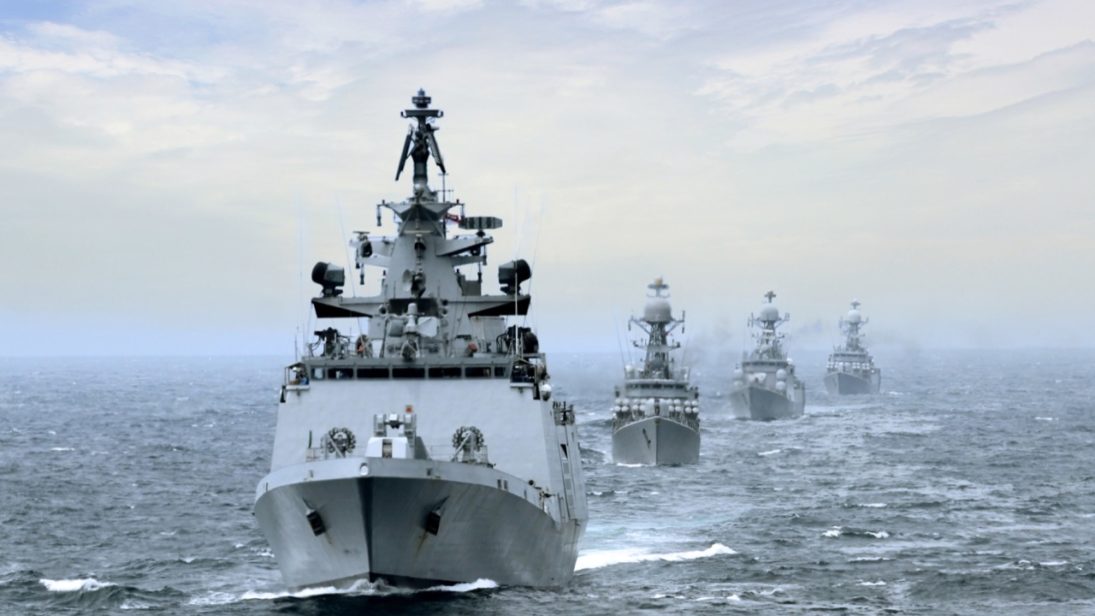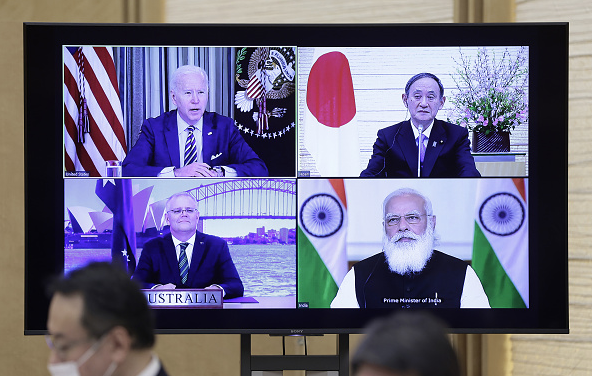
Australian and Japan recently posted liaison officers to the Indian Fusion Center-Indian Ocean Region (IFC-IOR) in 2021, where the U.S. liaison officer has served since 2019. IFC-IOR, a maritime information hub initiated by India, brings all Quad members under one roof to exchange vital maritime information in the Indian Ocean Region (IOR). New Delhi has deliberately divorced touting of IFC-IOR from the Quad as it does not want to limit the appeal of the project, but its initial uptake with Quad countries signals their collective interest in a stable and secure IOR. The fusion center emboldens India’s role as a “net security provider” in the IOR as envisaged in U.S. strategic framework as well as in India’s self-conception. According to India’s Maritime Security Strategy of 2015, this net security provider role entails a goal of shaping a favorable and secure maritime environment for India’s interests and for others who actively share the global commons. India’s geopolitical positioning and decades of operational experience in the Indian Ocean position it as the most suitable country for this role.
In accordance with its rising international profile and in order to meet its strategic interests, it is critical that India does the necessary heavy lifting to maintain a stable maritime order in the IOR. Information sharing through IFC-IOR on a real-time basis is deemed an essential step towards maritime stability for both commercial and strategic purposes. Going forward, IFC-IOR needs to prove its utility to all countries who employ IOR sea lanes for transit of vital goods and enhance its technical ability beyond White Shipping data to ensure total security of the high seas.
Going forward, IFC-IOR needs to prove its utility to all countries who employ IOR sea lanes for transit of vital goods and enhance its technical ability beyond White Shipping data to ensure total security of the high seas.
Maritime Information Hub
The perpetrators of the 2008 Mumbai terrorist attack accessed India’s financial capital through a coastal access point using a stolen vessel, which exposed the lapses in coastal security and surveillance. In the aftermath, India instituted Information Management and Analysis Center for intra-agency information coordination, especially between the Indian Navy and the Indian Coast Guard, the two principal agencies with the mandate for coastal security. This endeavor equipped India with the technical know-how to monitor coastal waters, aggregate and assess information, and disseminate it across 51 nodes responsible for various phases of security. In a subsequent step, India installed a Coastal Radar Surveillance System (CSRS) across friendly nations in the Indian Ocean littoral, including the Seychelles, Mauritius, the Maldives, and Sri Lanka, to monitor a broader swathe of the ocean. With this capacity in place, India was prepared to go international. India first announced its intent to host a joint Information Fusion Center to strengthen maritime domain awareness at the 2017 Indian Ocean Rim Association Summit in Jakarta However, it would have been challenging to bring countries as diverse as Iran and Australia to work together on such a project despite IORA partner countries signing some good intention memoranda.
Eventually, India decided to institute a maritime information hub in 2018 that it would open to international partners, assuming that such a project would invite interests from key Indian Ocean players in the future. Most littoral countries with some naval capabilities usually have information processing centers, but those are limited in scope to national security. India’s IFC-IOR joins the rank of successful regional initiatives, such as the Regional Maritime Information Fusion Center in Madagascar and the Information Fusion Center in Singapore, which support regional operations with reliable and real-time information to multiple stakeholders. In its first three years, IFC-IOR has secured White Shipping agreements with 36 countries and three multilateral constructs. It can host up to 40 International Liaison Officers (ILOs). Currently, Australia, the US, France, Singapore, and Japan have their ILOs in place and a total of 13 friendly countries have been invited to join. Among other things, the IFC-IOR monitors thousands of vessels a month (average 36,830 in 2020) and produces a monthly summary and analysis of maritime security incidents across all four major sectors of the Indian Ocean.

Next steps and challenges
By instituting IFC-IOR, India has signaled to its partners that it is willing to shoulder the security burden and that it has the adequate capacity to do so. However, a few steps would strengthen India’s resolve and prepare it for future challenges. First, the primary tracking of vessel movement is based on AIS transponders that are mandated by the International Maritime Organization for all vehicles of 300 gross tonnage and above. For smaller vessels, including those used in criminal activities, the reliability of data depends on satellite imagery and India’s CSRS installed across the IOR. Here India not only needs to invest immensely in monitoring technology and capacity building but also partner with like-minded countries to enhance on both fronts. Second, the data is gathered from multiple sources and integrated at IFC. Integrating the data in a uniform system and making it accessible for timely interpretation would remain an area of continuous improvement. Third, the Indian Navy would need to continually evolve and reinvent itself as the threat profile of IOR increasingly becomes complex. For instance, in its first report, IFC classified incidents into six categories, and has since added two new categories—Natural Events and Environmental Security. Fourth, although starting with White Shipping information is a laudable first step, the future of security depends on tracking strategic vessels and sub-surface vehicles. To meet this goal, India would require the technical prowess of international partners and a strong commitment from the global comity for transparency and free movement of global maritime traffic. All stakeholders must agree to the principle that subterfuge cannot have space in the management of IOR as a global commons, which would require the collective to stand up to Beijing if necessary.
Finally, by producing reliable insights through this project, the Indian Navy needs to prove its efficacy and utility to all those countries that remain commercially and strategically invested in this region. It can learn from best practices adopted by its counterparts in the United States, Madagascar, and Singapore, all of whom are friendly countries and would be willing to help India make this a state of the art center. As this center becomes a part of India’s critical infrastructure, it also needs to take issues like cybersecurity quite seriously. The project’s credibility depends on its ability to withstand cyber-attacks from inimical forces who have earlier targeted critical infrastructure in India both to disrupt its functioning and dent India’s image. As the center will prove its utility, those reluctant to partner with at this early stage are more likely to reconsider their choices in the future. While it is in India’s interest to broaden the alliance of countries who are interested in peaceful and stable IOR, any framing of this idea as anti-China would make many countries reluctant to partner by sharing information or sending liaison officers, something which India should avoid.
By shouldering the vital responsibility of maritime domain awareness through the dissemination of critical information, India is gearing towards enhancing the stability of the high seas and raising its global stature.
Conclusion
The role of net security provider involves many critical functions, ranging from maritime deterrence to stability of the region. Information collating and processing is a small yet crucial step in that direction. The strategic acceptance and purchase of the Indo-Pacific internationally might take some time. However, the stability of IOR for its commercial viability is already a given for the world. By shouldering the vital responsibility of maritime domain awareness through the dissemination of critical information, India is gearing towards enhancing the stability of the high seas and raising its global stature.
***
Image 1: SpokespersonNavy via Twitter
Image 2: Bloomberg via Getty Images


